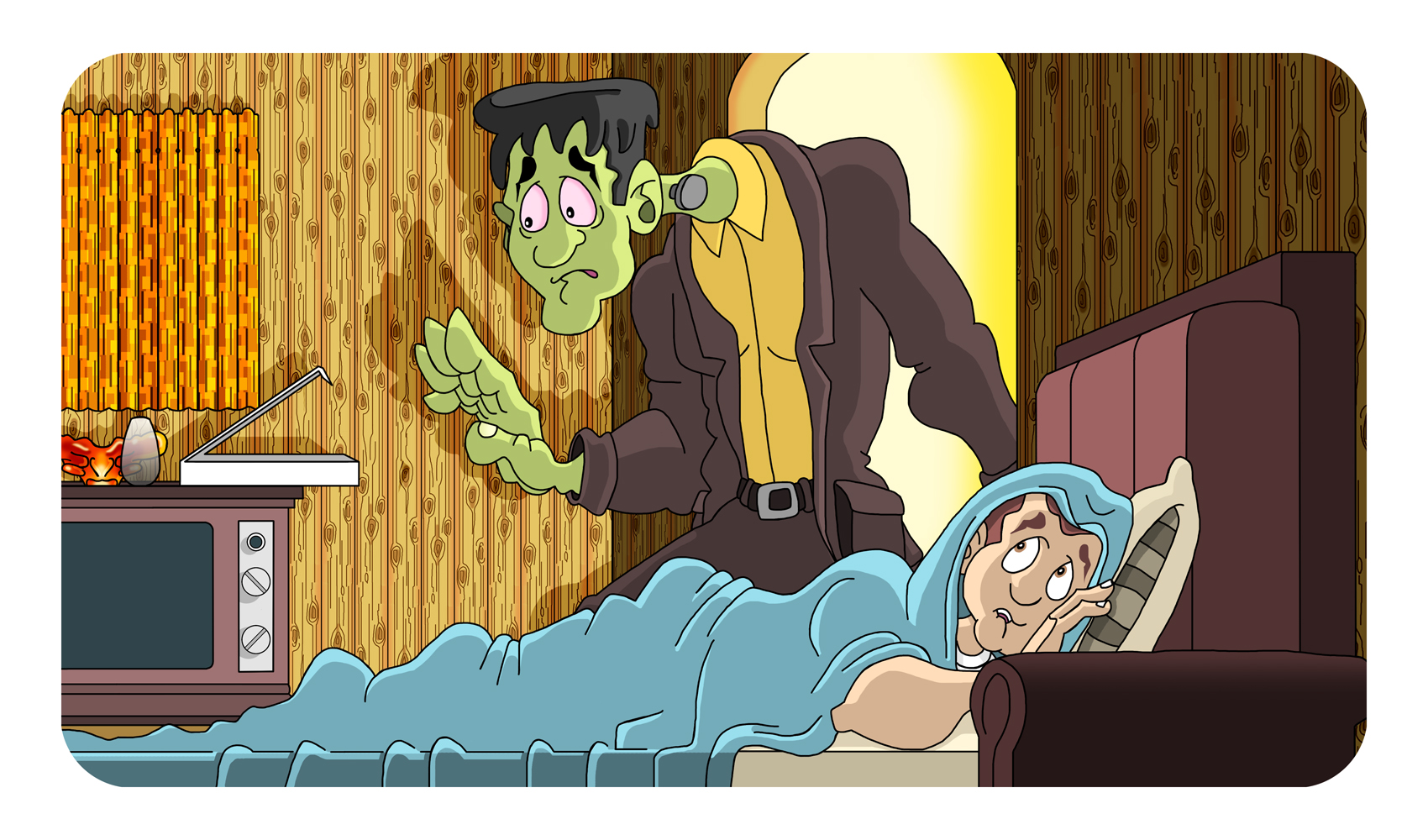All images courtesy of Mark Julien
Content warning: homophobia, use of the f-slur
It was 1978. I was eight years old. While our house wasn’t small, there were only enough bedrooms for my parents and my three siblings. Being the youngest, it was my fate to sleep on the living room sofa bed come 9:00 p.m.
Late one Friday night, long after my mother had tucked me into bed, my eldest brother Ricky came home. Hoping he would not wake me, he quietly crept into the living room and turned on the TV. With the volume low, he perused the channels, finally settling upon a black-and-white movie. Unbeknownst to him, I peeked out from beneath the covers and was introduced to the 1931 horror classic “Frankenstein.”
I was captivated by what I saw on the TV and watched the story unfold with breathless anticipation, still hiding under the covers. About halfway through the film, my brother got up from the living room floor and went to the kitchen to order a pizza. When the pizza finally came, I stretched my arms above my head, rubbed my eyes, sat up in bed and let Ricky know that his baby brother was no longer asleep. Abandoning the floor, my big brother sat on the edge of the couch and offered me a slice of pizza. Illuminated only by the light of the TV, we sat together, ate our pizza, and continued to watch the movie. As we watched, I peppered my brother with questions about the monster on the screen and why the villagers seemed so intent on destroying him. Though I was frightened of the monster, I could not help but sympathize with him. In an attempt to validate my feelings, Ricky explained to me that sometimes people are frightened of what they do not understand.
After the movie ended, my brother turned off the TV, tucked me back into bed, and made his way upstairs to his bedroom. Fearful but tired, sleep eventually found me as well. About an hour later, however, something woke me. Expecting to see my brother, I scanned the room. To my horror, however, my brother was nowhere to be found. Instead, in the archway that led to the kitchen, I saw Frankenstein’s monster. I was utterly terrified. I wanted to run to my parents’ bedroom but the monster barred my way. Concealed beneath the covers, I did the only thing that I could think of: I lay as quietly and as motionlessly as possible with the hope of not being seen. When the morning finally came, I found that there was no longer a monster in the archway, but that night of terror hooked me and I have loved monsters ever since.
Surviving that night of terror alone, without running to my mother for comfort, invigorated me and left me hungry to find out everything that I could about the creatures of the night. I was determined to follow this new interest wherever it led. Shortly after that fateful night, at the local convenience store, I discovered a collection of Monster Initial Stickers that Topps produced in the early 1970s. These colourful alphabet stickers emblazoned with creepy illustrations of monsters served as my jumping-off point and the beginning of both my monster obsession and education.
Funded by my other older brother, Kevin, I collected every one of the stickers. Kevin shared with me all he knew about the monsters pictured on the cards. From him I learned that only fire could frighten Frankenstein’s monster, that a silver bullet could kill a werewolf, and that a stake through the heart was the best way to dispatch a vampire. Armed with this knowledge, I felt protected. But I was still curious and wanted to learn about all the other monsters that did not appear on those brightly coloured cards.
By 1983, I was in Grade 7. I decided to go to the source of the movie that I loved so much and read Mary Shelley’s 1818 novel, “Frankenstein.” The book was noticeably different from the horror film. For one, Shelley’s depiction of the Creature had me empathizing with him even more than the movie had. But the most surprising thing that I gleaned from the novel was that Victor Frankenstein was the true monster of the story. This epiphany blew my young adolescent mind. Frankenstein’s callous abandonment and persecution of his creation, a being longing to belong, not only angered and upset me but taught me that the human monsters of the world were far crueler than the supernatural ones that adorned my colourful collectibles.
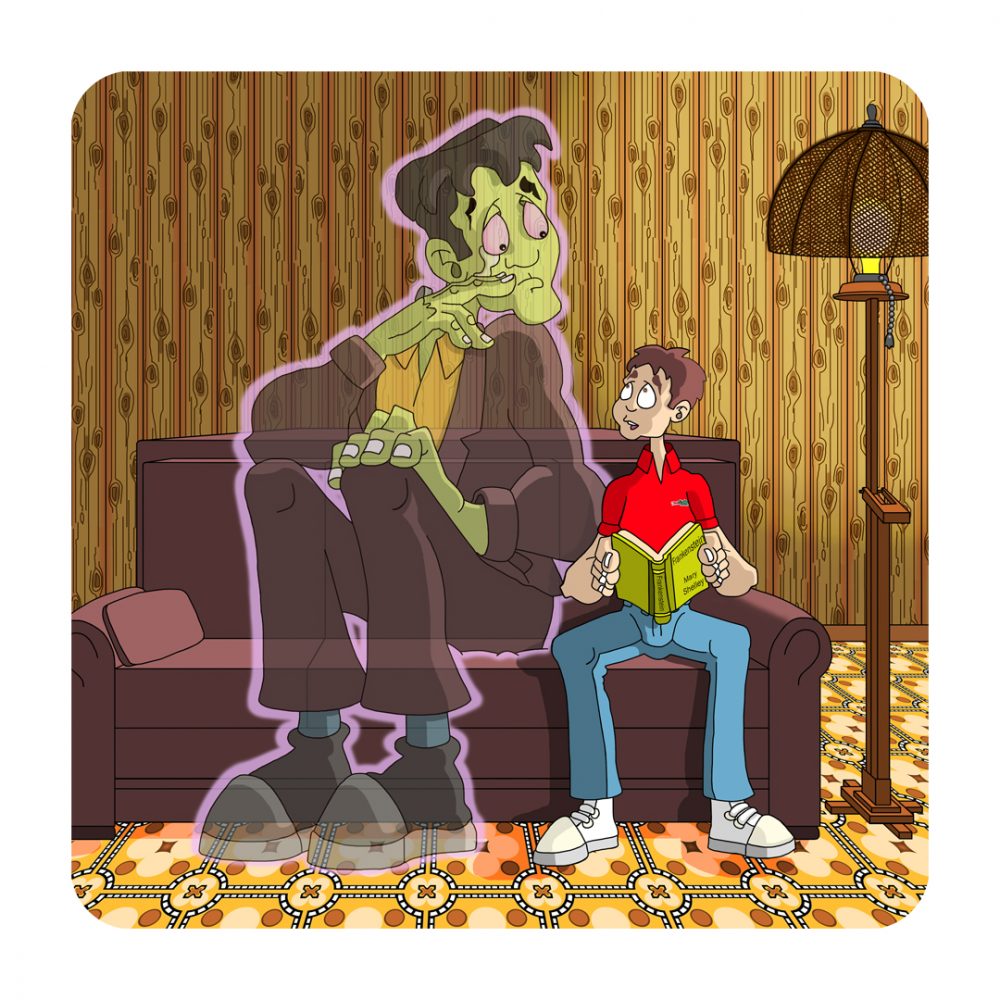
They say art imitates life. Sadly, at the beginning of Grade 7, my best friend decided that he did not want to be my friend anymore. No explanation was ever given. He stopped hanging out with me and left me alone to navigate my way through middle school. It took me months to mourn the loss of that friendship, and by the time I was able to move on, the peers at my school, cemented within their friend groups, seemed unwilling to make room for me. Alone, and longing to belong, I became despondent and ashamed.
Thankfully, even that young, I considered myself an artist and began to channel my frustrations and energy into strengthening my drawing skills. Young teenagers can be very cruel, and a quiet, artistic boy who was always alone became a perfect target for bullies. To me, those bullies were as pitiless and uncaring as Victor had been to his creation. By high school, the ongoing taunts and labels had changed from loser to faggot. With that word constantly yelled at me in the hall, I felt like Frankenstein’s tormented monster.
My respite came in Grade 11 in the form of a media arts program offered by another high school across town. Moving to a new school was my opportunity to reinvent myself and find a new circle of friends. However, the bullies had done their job well. The social isolation and bullying I had endured for 5 years resulted in me becoming homophobic myself. I wanted to distance myself from the label of faggot and figured if I spouted my own brand of homophobic vitriol and pointed the finger at others, I could avoid the spotlight myself. My biggest regret from my high school years came in Grade 12 when I, ignoring the hurt that was once perpetuated on me, called someone else a faggot. I remember that person’s face but not his name, and, though I never apologized, I regretted calling him that even before that word left my lips. In trying to conceal and protect myself I had become one of the bullies I so feared and detested. Thankfully, that incident changed me and that night, before going to sleep, I vowed I would never use that terrible slur against anyone ever again.
As the years went by, and I began to heal, I also began to question my sexuality. In retrospect, I knew that I was gay, but I refused to give myself permission to admit the truth to myself until after graduating from art school. A year after graduating from college, already frustrated with my life as a freelancer, I longed for a project that I could have complete control over.
During those early years of my artistic career, I was also exploring my sexuality by visiting the bars in Toronto’s Gay Village. Though still conflicted and not ready to come out to anyone, I spent many a liberated night enjoying the gay night scene. Allowing myself the freedom to explore my sexuality, I began to see parallels between the monsters and being a closeted young gay man. Like the Wolfman, I was ashamed of a part of myself and fearful that it would one day be discovered. Like Frankenstein’s monster, I was terrified that when the secret of my sexuality was discovered, my family and friends would abandon me. Like Dracula’s obsession with human blood, I seemed at times to be ruled by my sexual urges. Faced with this realization, I decided to take steps to no longer hide who I was and to begin sharing my truth with those closest to me. It would take some time for me to reject the conditioning I had subjected myself to — that coming out would lead to isolation — but with the love of a close group of friends, I eventually became the person I was always destined to be.
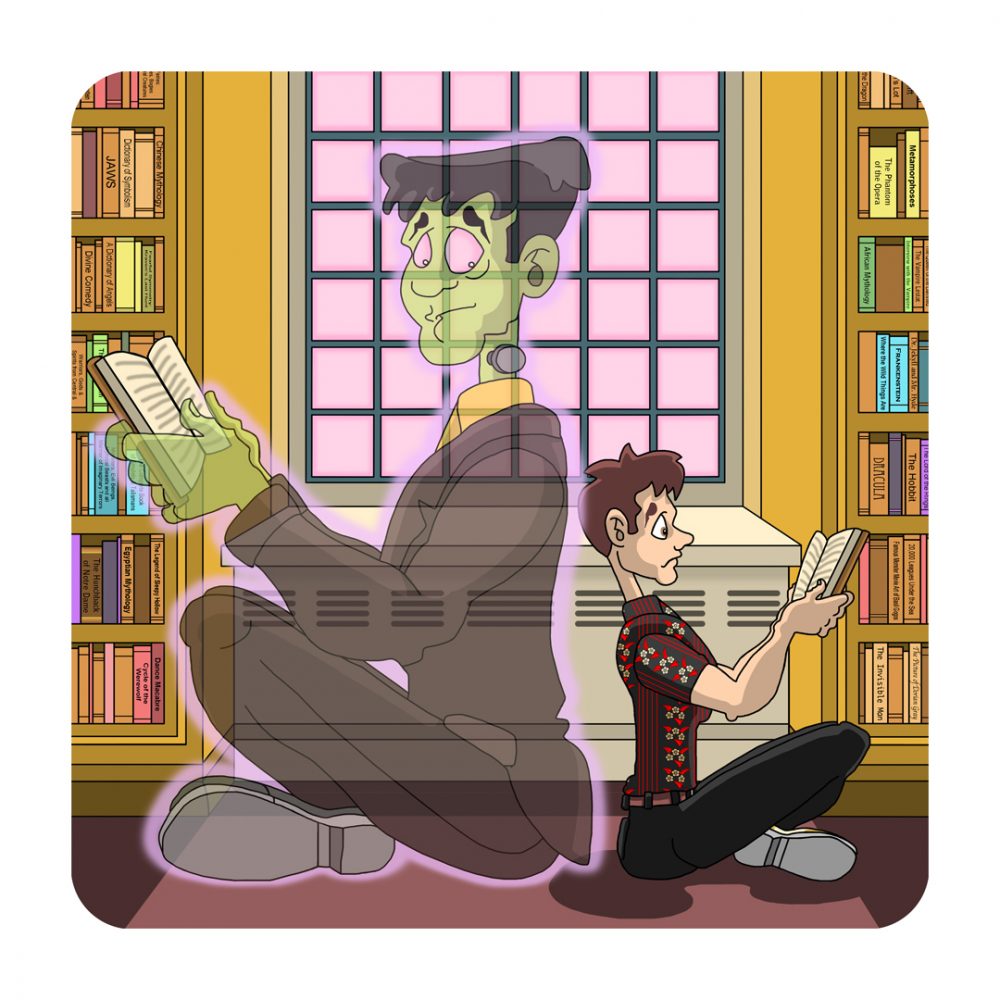
Unfortunately, as I was fighting my personal war in coming to terms with my sexuality, my father was waging his own 10-year battle against Alzheimer’s disease. I am sad to say that in December 2005, I lost my father due to complications brought about by his fight with that horrible disease. Watching him suffer for those 10 years, and my family along with him, broke my heart. Though I had been extremely close to my dear father, by the time I finally had the courage to tell him I was gay, he was no longer able to understand me. The biggest regret of my life will always be lacking the bravery to share my truth with my dad before it was too late.
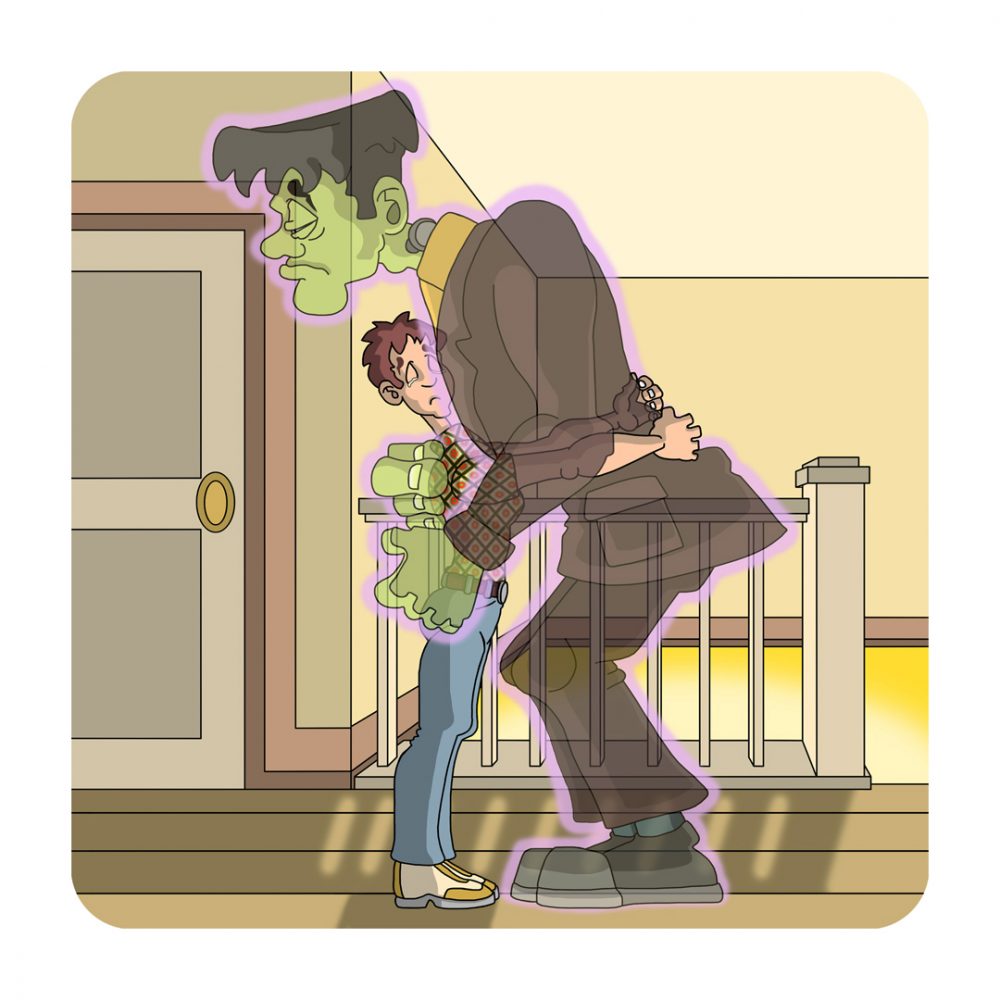
Losing my father changed me. It made me see my life differently, and as a result, my priorities shifted. Preoccupied with this idea that my father didn’t completely know his son before he died, I became obsessed with trying to reach him in another way. Using my talents as an illustrator and the monster lore I had accumulated, I began the creation of my first graphic novel. This book would become a love letter to my father, its narrative sharing the closeted and secretive parts of my life. Gambling that other queer people would recognize themselves within the plight of monsters, I began building a literary universe about a guild of monsters reimagined with the sole purpose of coming to every queer person when they need help making the journey out of the closet. In this universe that I created, the Closet Monsters are former humans who, for some reason, did not live their earthly lives in truth and therefore are destined to live out their afterlives helping others to find their courage and accept who they really are.
One of the interesting things that I learned writing and illustrating my first book was how much braver a writer I am when writing dialogue for the Closet Monsters. Things that I lack the bravery to say through the human characters come much easier to me when they are voiced by the Closet Monsters.
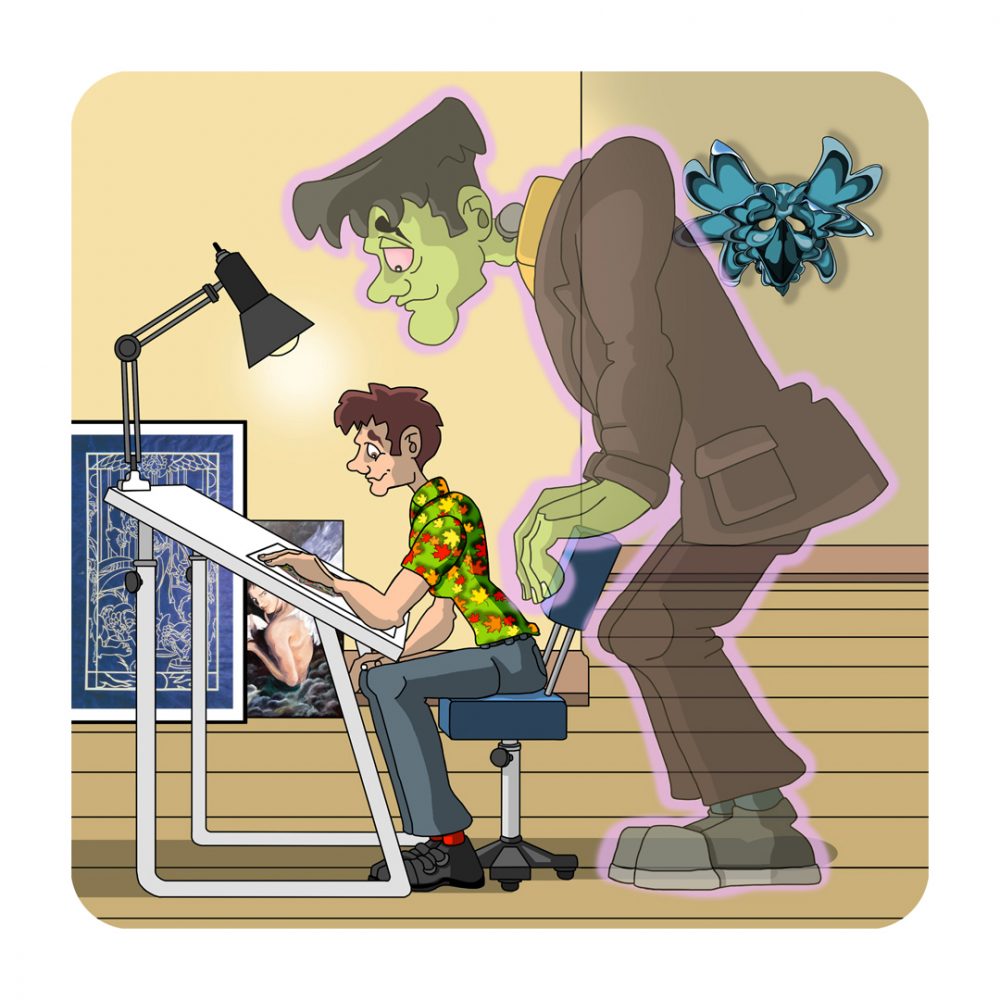
Expanding on the metaphor from my first book, that members of the queer community are ostracized and feel like monsters, I broadened that metaphor with my second book to include trans people as well. In this tale about the importance of loving and accepting oneself, I tell the story of Abel, a patchwork ragdoll, who undertakes a transformational journey to become their true self. In my story, Abigail, who becomes Abel, begins his life as a Closet Monster in a body that does not reflect his gender, just as Frankenstein’s monster wakes up in a body cobbled together from the dead in which he feels out of place. Neither Frankenstein’s monster nor Abel are given the choice of which body they will inhabit in their second lives. Though Frankenstein’s monster has no choice but to resign to his fate, Abel takes charge of becoming who he was always meant to be. Although Abel’s transformation does not cancel his otherness, it does, however, allow for him to finally feel comfortable in his patchwork body.
It will come as no surprise that ever since I spent that sleepless night hiding from the monster from that famous movie, I have been enamored with that character. They are by far my favourite monster, and I am tickled pink that my version of them adorns the pages of my newest book — a book that highlights a journey of inclusion, self-acceptance and self-determination. I hope both Mary Shelley and director James Whale would approve.
Credits:
Author: Mark Julien (He/Him)
Copy Editor: Rhea Morita (They/Them)
Illustrator: Mark Julien (He/Him)

